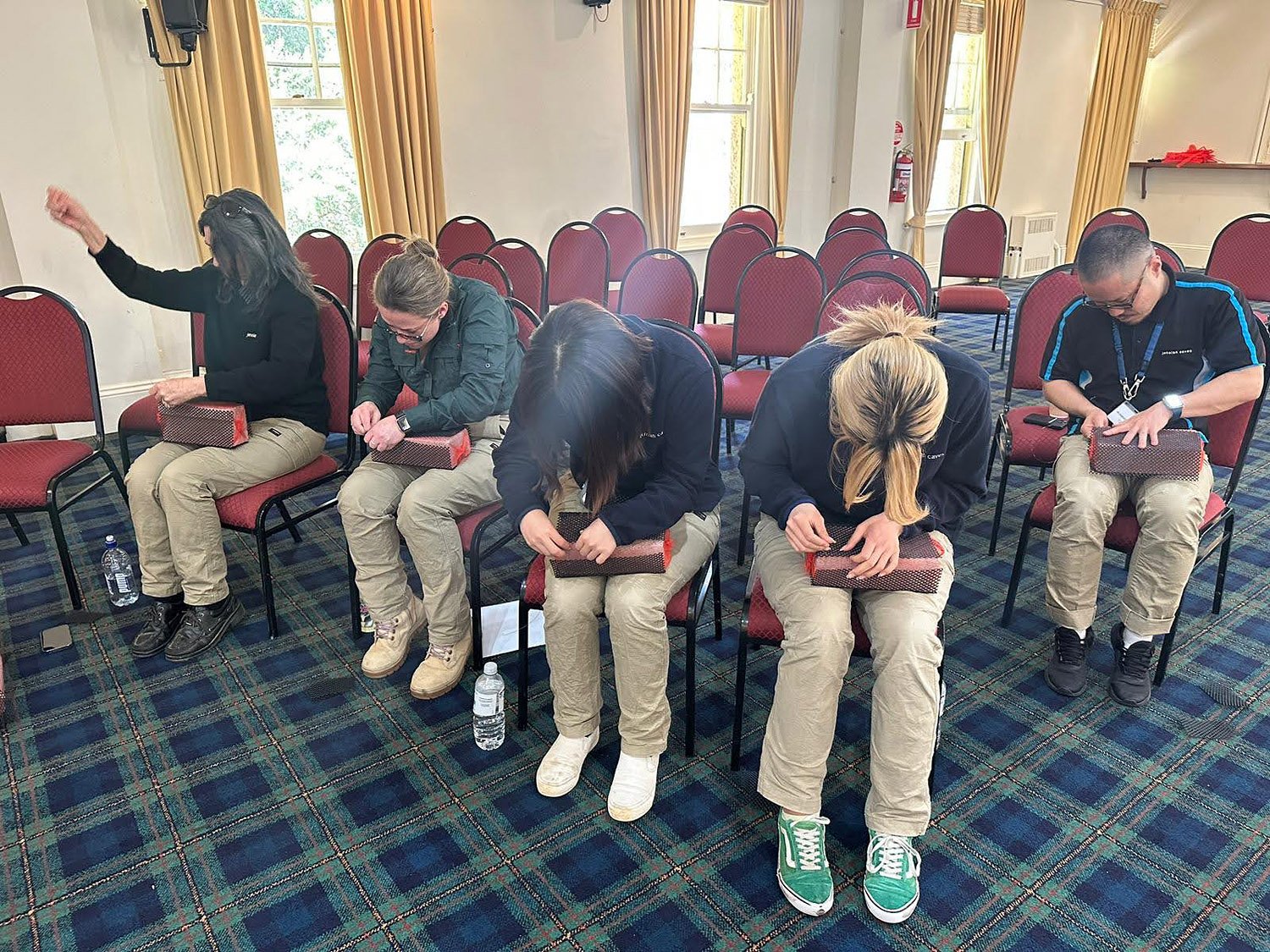‘Waterbug Hotels’
Platypuses are voracious feeders and spend hours gobbling up waterbugs (freshwater macroinvertebrates) living on the bottoms of lakes, rivers and other waterways. Although platypuses are usually hard to spot in the wild, pulsing ripples on the water’s surface or from under banks and trees are giveways - that would be a platypus busily chewing its meal of waterbugs. Once done, it heads back out for another dive.
Restoration of the Blue Lake to its former state has been a priority after the fire and floods of recent years. To bring platypuses back to the lake, we must guarantee a plentiful supply of waterbugs. We asked Dr Eren Turak, aquatic ecologist with NPWS, for advice. Eren had several ideas for increasing waterbug abundance, including ‘seeding’ the Blue Lake with waterbugs collected from undisturbed areas downstream along the Jenolan River.
To do this, we built ‘waterbug hotels’, artificial substrates or habitats that waterbugs could colonise. Occupied ‘hotels’ would be picked up around three months after they were set, hopefully full of yummy waterbugs. Eren’s design: a brick for weight or ballast, and mesh onion bags and gutter guards for waterbugs to cling to. Our staff built 30 ‘hotels’, which have been placed along the Jenolan River in a variety of locations to ensure a diversity of waterbug species. We will retrieve our ‘hotels’ in December and let you know who’s checked in!










